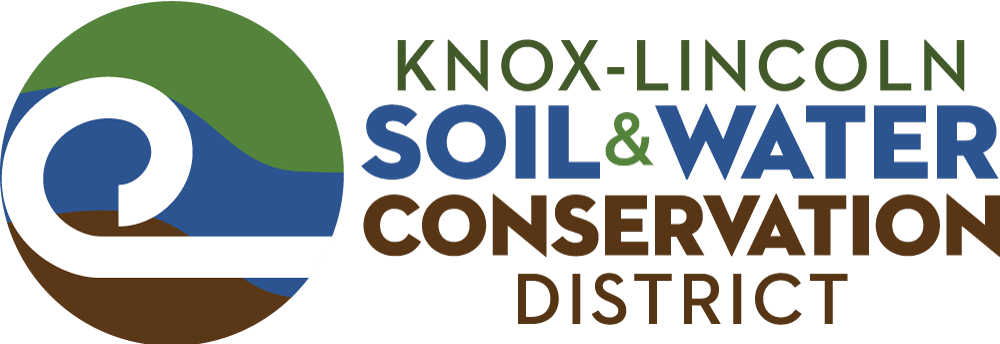What is a conservation district?
The Knox-Lincoln Soil & Water Conservation District (KLSWCD) is a non-regulatory community leader that responds to local natural resource issues. We are a tax-exempt unit of local government - not unlike a school district.

Our mission is to provide assistance in the conservation of soil and water resources for our community through proactive efforts, actions, and education.
How we promote our mission
We promote the sustainable use of natural resources and have been fulfilling our mission of conserving land and water resources since 1947. We accomplish this through delivery of technical assistance, education (K-12 and Adult), special events, and outreach to public and private landowners, municipalities, and watershed associations.
How we work
Volunteer Board of Supervisors
Knox-Lincoln Soil & Water Conservation District is guided by a volunteer board of local landowners and is a member of the non-profit Maine Association of Conservation Districts.
Board meetings are held on the third Wednesday of the month at the District office and are open to the public.
USDA, NRCS, and FSA
The District works with the USDA, Natural Resources Conservation Service (NRCS) and the Farm Service Agency (FSA) to provide technical assistance in soil and water conservation so that you can work your land AND conserve it for future use.
Funding
We receive funding from the Maine Department of Agriculture,Conservation and Forestry, Knox and Lincoln counties, grants, technical assistance and special events.

In 2011, for every dollar we received from Knox and Lincoln counties, we provided more than $3.35 worth of services. In addition to the funding we receive from the state and counties, the District meets its budget through the proceeds of the Spring Plant and Trout Stocking sales, grants, and fee-for-service technical assistance.
District History
Legislation and Organization
The Knox-Lincoln Soil and Water Conservation District was organized by the Maine State Legislature in 1947. This legislative act was precipitated by the ecological and agricultural disaster of the 1930s known as the Dust Bowl. After years of drought and poor agricultural practices in the Great Plains, the soils eroded blowing dust storms as far afield as Washington, DC. In response, Congress declared soil and water conservation a national priority.
Ensuring Success Nationally
Because nearly ¾ of the continental United States is privately owned, President Franklin D. Roosevelt, in 1937, recommended that state governors allow local landowners to form soil conservation districts to ensure the success of conservation work on private land. Today, the country boasts nearly 3,000 conservation districts, including 16 in the state of Maine.


